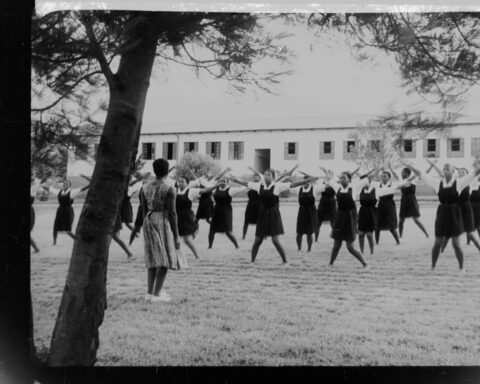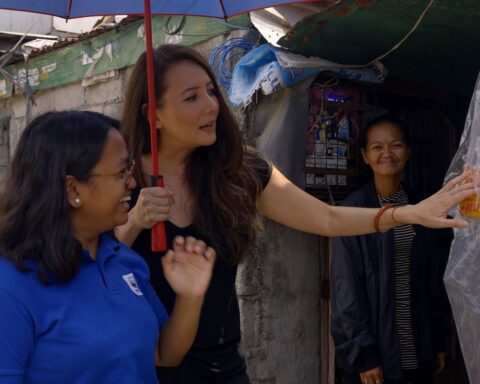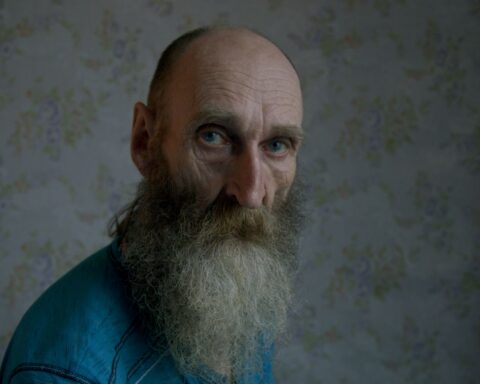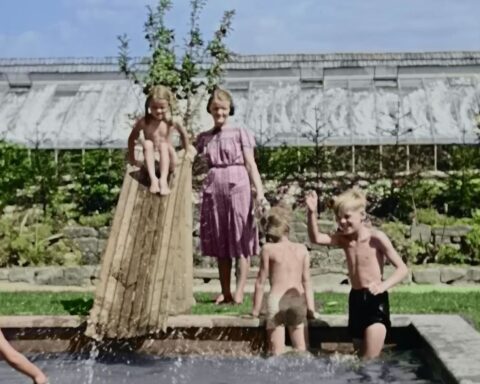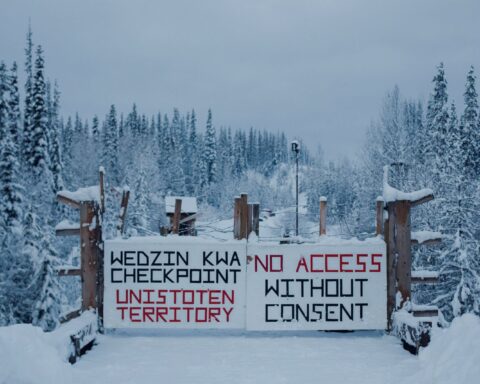With the bloody 1976 Students’ Revolt, the American media snapped to attention, and discovered apartheid which from then on became the hypocritical rationale for covering the violence in South Africa, the real bait for the networks. The Soweto Uprising had caught the authorities by surprise. Newsreel crews from around the world, now equipped to record sound with ease, captured not only the violence, but what blacks felt about it. However, white men were still shooting the cameras and selecting the shots. I do not know of any black newsreel or documentary cameramen active in South Africa at that time. But there would be a later technological chapter to the reporting of apartheid.
Black history in South Africa appeared to me to be one of cycles of protest in different forms, and that is why I had given my pro-black African documentary the title of Generations of Resistance. It was prophetic to the extent that it anticipated the next wave, but only because the strength of oppression and of the counterweight of black nationalism made it inevitable.
This came in 1984, and brought about the declaration of a State of Emergency. The world’s television networks between 1976 and 1984 had switched entirely to video, with all the immediacy of satellite near-instant transmission. For the South African government, this was the worst possible development and, for the first time, they imposed a strict censorship on the foreign media, clearly aimed at television coverage. Frankly, I have never understood why it took them so long. From now on, text and images would have to be submitted for clearance by the authorities, and any transgression would lead to withdrawal of accreditation.
This meant that the images could be manipulated by the authorities. In practice, the censor clamped down on the recording of police brutality, but fully allowed what came to be called black-on-black violence, which gave the impression that there was a savage civil war going on inside black society with only the forces of law and order to stop it. By this time all television journalists operating in South Africa had to rely on local help because it was too dangerous for whites to go into the townships. It was this, more than any altruism, that led the foreign media to train black cameramen for the first time.
There had evolved by then South African film-makers whose anti-government activities entailed working with foreign entities, ranging from foreign television to the National Council of Churches, whom they depended on for funding, and who depended on them for getting out uncensored images. A group called The Free Film-Makers fed underground material to the outside world; they were secretly funded by International Defence and Aid. Bear in mind that we were now into the new technological phase, the age of video, which was far easier to disseminate than film.
After Generations of Resistance, I made The Nuclear Axis, an exposé of South Africa’s move towards the acquisition of nuclear weapons’ capability. In 1984, I embarked on a Villon Films documentary on Nelson and Winnie Mandela, intending to depict them as a highly successful political partnership. Winnie was the only one of the couple not in jail but she was in exile—in a township called Brandfort, in the centre of the country—far away from her home base of Soweto. My plan was to go to the Transkei and to try to reach Winnie from there. The Transkei was a bantustan, a country deemed “independent” by the white government as part of the apartheid strategy to divide all of South Africa into a number of small black nations under the control of one dominating white nation. In fact, it was a policy of balkanization.
Under South Africa’s own terms, if the Transkei was an independent country, then I could only be prevented from visiting if the Transkeian authorities didn’t want me. I wrote and got permission from the puppet government of the Transkei. We were a team of three: myself, Kenneth Mdana, who was a Xhosa from Grahamstown and a friend of some years, and David Mesenbring, a white American with years of experience as a missionary in South Africa. The Transkei was the birthplace of Winnie and Nelson. Both were Xhosa, like Kenneth our sound man, and we filmed in the areas where they had grown up. We had contact with African National Congress (ANC) members there, but they were under surveillance by the secret police of Matanzima, the puppet ruler of the Transkei (who, incidentally, was a relative of Nelson Mandela).
A frustrating time was spent in trying to contact Winnie. I had her number there, and I would typically call the Brandfort operator (there was no direct line), who would ask me in a thick Afrikaner accent what number I wanted. When I would give Winnie’s number, the operator would say, “Mrs. Mandela is not available right now.” Then we had a piece of luck. By coincidence, when we were filming in Winnie’s birthplace, we heard that she was nearby. A relative had died, and Winnie had been given permission to go to the funeral. We tracked her down, but she was just about to go back to Brandfort, because she had leave from the police to be away for only a few days. I told her we wanted to interview her, and she replied as she was about to leave,“Come to Brandfort.” And then she was whisked away in her minibus.
It was like a royal command: “Come to Brandfort.” Well, then, that’s what we would have to do.
We arranged to leave early one morning, crossing from the Transkei into the Orange Free State at a border crossing that was supposed to be relatively unwatched. But the night before we were due to leave, Umtata blew up.
Specifically, the oil storage depot for the city was sabotaged. We watched lugubriously as the plumes of smoke rose above the city and police vans dashed everywhere, sirens wailing. There was no obvious reason, and consequently no obvious culprits, for this sabotage. As far as we were concerned, this was irrelevant: we assumed that the border posts would have extra guards on duty to catch suspicious travellers.
We did some hard thinking. If we were to visit Winnie, it would have to be within the next few days, because we were due to leave. I felt that I had to give it a try because it was now or never. I left it to the others as to whether they would come or not. There was no risk for David who was not, unlike me, a persona non grata in South Africa. Kenneth was a different matter; being a black South African, he could get into a lot of trouble. But he decided to come anyway. We gave it one day for things to calm down a little, and then we left. We drove the 450 miles to Brandfort, a 10-hour journey, without seeing a single police car. The only incident was when we stopped for food, and the restaurant-owner refused to serve Kenneth, so we drove on. We arrived in the white town of Brandfort, and had to ask the way to the black township. It must have been perfectly obvious what we were there for.
We found Winnie at her small cinderblock house busy helping a young student with her schoolwork, but she broke off to receive us. She was, as always, charming. In the mid-80s, a dozen African-American actresses were competing to play Winnie, but no-one could play Winnie as well as she played herself.
We started the interview, arranging with one of Winnie’s friends to have each 10-minute can of film spirited away as soon as we had shot it, in case of accidents. Halfway into the interview, Winnie raised her hand—a car had stopped outside the house. “The Special Branch,” cautioned Winnie.
But our luck held and, incredibly, they drove away again. We never knew if they had bothered to call in the number on our rented car which was parked outside, but in any case, there was no further problem. That is, not with the Special Branch—we had sabotage from within. At one point, Winnie was talking about Xhosa men. Not specifically accusing Nelson, Winnie declared, “Oh, Xhosa men are the worst men in the world!” At which point Kenneth Mdana, our Xhosa soundman, switched off the tape-recorder. With difficulty, he was persuaded to switch it back on.
We finished the interview and started to wrap our cables and lights. Winnie is the only person I have interviewed who has ever offered to help us pick up the mess we had made of her living room.
We drove to where our exposed film was hidden, then out of the township and away from Brandfort. We were so cocksure by now that we stopped in Bloemfontein, a large white city, and stood ourselves a dinner at a first-class restaurant where Kenneth had no trouble being served together with us. We drove back home to Umtata through the night.
Passing through Johannesburg airport a few days later on our way out, we met a group of black Americans, civil rights activists, including Bayard Rustin, who wanted to do the same as we had done—cross into South Africa via the Transkei. We told them about our crossing route. A while later, we heard that they had been detained at that crossing and subjected to intense interrogation. I have to say that more than any canniness, skill, or acumen, luck played a major part in getting my South African films done.
Only a few months later, when Winnie was absent from her home in Brandfort, the house was torched. Through a South African stringer, I got film of Winnie picking her way through the smouldering ashes. I think we were the last to film her in that place before the fire; and just as important, I had copied family photos of hers that were destroyed in the fire.
I had intended my documentary to be about Winnie and Nelson. But with Winnie being so palpably present and Nelson reduced to a minor role by his absence in prison, her story took over: I renamed the documentary Winnie Mandela. I felt bad about neglecting Nelson, and decided to make a documentary on him called Remember Mandela! Hard to believe as it may be now, Nelson had been written off by his enemies as a player in this struggle for South Africa’s soul. When the film was completed, I had a call from an anti-apartheid group in Atlanta that wanted to show my biography of Nelson on the opening night of the 1988 Democratic Convention, which happened to coincide with Mandela’s seventieth birthday.
I had no backing for this film and it got no television broadcast in the United States, where I was living at the time. But it did quite well in non-television outlets. In those days, when we were still working with film, there were groups—political organizations, churches, libraries, universities, unions, independent theatres—that would rent a 16mm print and follow a screening with a discussion. This was an excellent form of consciousness-raising, and I am not sure that video is as effective a medium as film was in that regard. It seems to me that video viewing is more of a personal, and less of a group, activity and so less politically useful.
Conscious that the clamp down on the foreign press was inhibiting and even distorting reporting from South Africa, my friend Daniel Riesenfeld and I tried to get backing for a documentary that would deal with this. You have to be aware that network news from South Africa did not carry the caveat that it was being reported under censorship—what was broadcast was “the news from South Africa” as far as the viewer was concerned. But given that the wave of violence of the mid-80s had died down, we could not arouse any interest in our project. Danny Schecter, a fugitive from network television, did manage to raise funds for a weekly report called South Africa Today, which started to air in the late 80s on some PBS stations. Schecter took all kinds of reports from what were considered unconventional sources, including a great deal from The Free Film-Makers in South Africa.
Dan Riesenfeld and I had started on our apparently abortive project when we got the brainwave to go in a different direction. Instead of looking at how South Africa was being reported in the news, we decided to look at how it had been “reported” over the years in cinema. Our thesis, which we were able to demonstrate overwhelmingly, was that the image of Africa going back to pre-film times had always been that of the Dark Continent, where whites had traditionally been the central figures and Africans cast as either the Savage Other or the Faithful Servant. This was true in the film Voortrekkers, a South African epic glorifying the Boer settlers made in 1916, and it was equally true in Cry, Freedom from 1987, which managed the extraordinary feat of making a white journalist the central character of a film about Steve Biko. I gave our opus the title In Darkest Hollywood.
Making this documentary involved interviewing filmmakers and actors outside and inside South Africa. When I applied for a visa—it was now into the thaw of the early 90s—this time it was granted. (Provided we did not film, which we cheerfully ignored.) In Darkest Hollywood came late in the anti-apartheid game, but nevertheless it is a case study in how and why films come to be made—or not made—at certain times. It shows how cinema, far from being pure “entertainment,” is a creature of political and social circumstances. Believe me, there are still people for whom this is a revelation. Our two-part documentary was very successful and we even made a reasonable profit from it. It has been enormously popular with educational institutions and at festivals.
At the time I was making Remember Mandela!, apartheid’s grip on South Africa, bolstered by its alliance with its powerful friends in the West, seemed to me depressingly firm. When, only two years after I made the documentary, Nelson was liberated from prison, and the ANC unbanned, I was completely taken by surprise. I believed that Mandela would not live to see a free South Africa. I was by no means sure I would see it myself. But during the 80s, a number of currents reached confluence. Many of these came from outside the country, like the fall of Communism, which made South Africa no longer strategically vital. At the heart of it all was the courage of the South African people who were determined to have their own liberation. This kept the cause alive so that eventually even the Congress of the United States was moved to impose sanctions, overriding the opposition of President Reagan (who later had the gall to take credit for it). Inside South Africa, a new generation of Afrikaners realized that not only were they facing revolt every few years, but that this was very bad economically. No one wanted to invest in a country that seemed so intent on self-destruction.
In the months leading up to the first free elections in South Africa in 1994, I was working in nearby Zimbabwe. The elections were a great historic occasion, but I chose not to visit at that time. I was convinced that it would be bloody; there had been so much violence leading up to the elections. In fact, when it came to the day, it was remarkably peaceful.
While in South Africa in 1996 to make my first non-apartheid documentary, SANGOMA, about traditional healers in KwaZulu-Natal and their work in plant conservation and primary health care, I was a victim of a mugging in broad daylight on a main thorough fare in Johannesburg, swarmed by six youths. There were two positive aspects to this experience: one was that a policeman was alerted by a black onlooker, and the other was that he arrived before I was physically harmed. Gratuitous violence is part of the syndrome of ethnic vengeance, from the Balkans to South Africa. The continuing high level of violent crime in the country, which is part of the legacy of apartheid, is surely, as a South African friend remarked, a form of low-level civil war, the all-out race war having been averted by the ANC’s peaceful take-over.
Burned by this attack, I returned very reluctantly to South Africa in 2002 to cover the summit of the world’s indigenous peoples which was held in Kimberley. It was hosted by the Khoisan people, commonly known as Bushmen. Maybe not coincidentally, the government at that time made a considerable land grant in the Kalahari to the Khoisan people, who are having to fight for recognition as a distinct people in a post-apartheid South Africa even though they are most likely descended from the original inhabitants of the southern part of Africa. In Kimberley, indigenous peoples from Africa, Latin America, the Philippines, North America, northern Europe and New Zealand hammered out a charter of rights. This was taken to Johannesburg to present before the United Nations’ Earth Summit. In the very last minutes of the last session, the charter was accepted by the United Nations—but of course with no binding power over nations that did not choose to become signatories to it.
Video-cameras in the 80s allowed anti-apartheid South Africans for the first time to use the new media technology as a potent weapon against apartheid. It became a method of recording organization and protest and of disseminating it effectively, albeit underground. When captured by the police, these images would also be used as evidence of collusion and conspiracy; but it did mean that the resistance was no longer dependent on outsiders to document apartheid. With the demise of apartheid, apart from the solid old-guard like The Free Film-Makers, there was a new generation anxious to prove its talent.
On my visit to Sithengi (the South African film and video market held in Cape Town) last year, I saw this generation in force. I am deeply impressed by the quality especially of documentary production in South Africa. It is in a special sense a revolutionary form, since the auteurs can, for the first time, explore aspects of South Africa that before were culturally or socially forbidden—from black gay life to investigations into police conduct. The end of apartheid cut off sources of financing from foreign NGOs, but this has been partially compensated for by the interest of Europe in South Africa, although like everywhere else, funding is drastically insufficient. Budgets from South African Broadcasting are a pittance even by our low standards.
My South African documentaries had been shown widely—through UN outlets, international television, and cinema and group screenings—but I had never known about inside South Africa. While visiting Sithengi, a new acquaintance offered to drive me through the Cape vineyards which I had never seen before. He was a senior figure in post-apartheid education, a former student activist. He asked me what I did, and when I mentioned Generations of Resistance, he exclaimed,“Oh, we used that all the time!” meaning during his student activist days. This moment was the apex of my work on South Africa.




